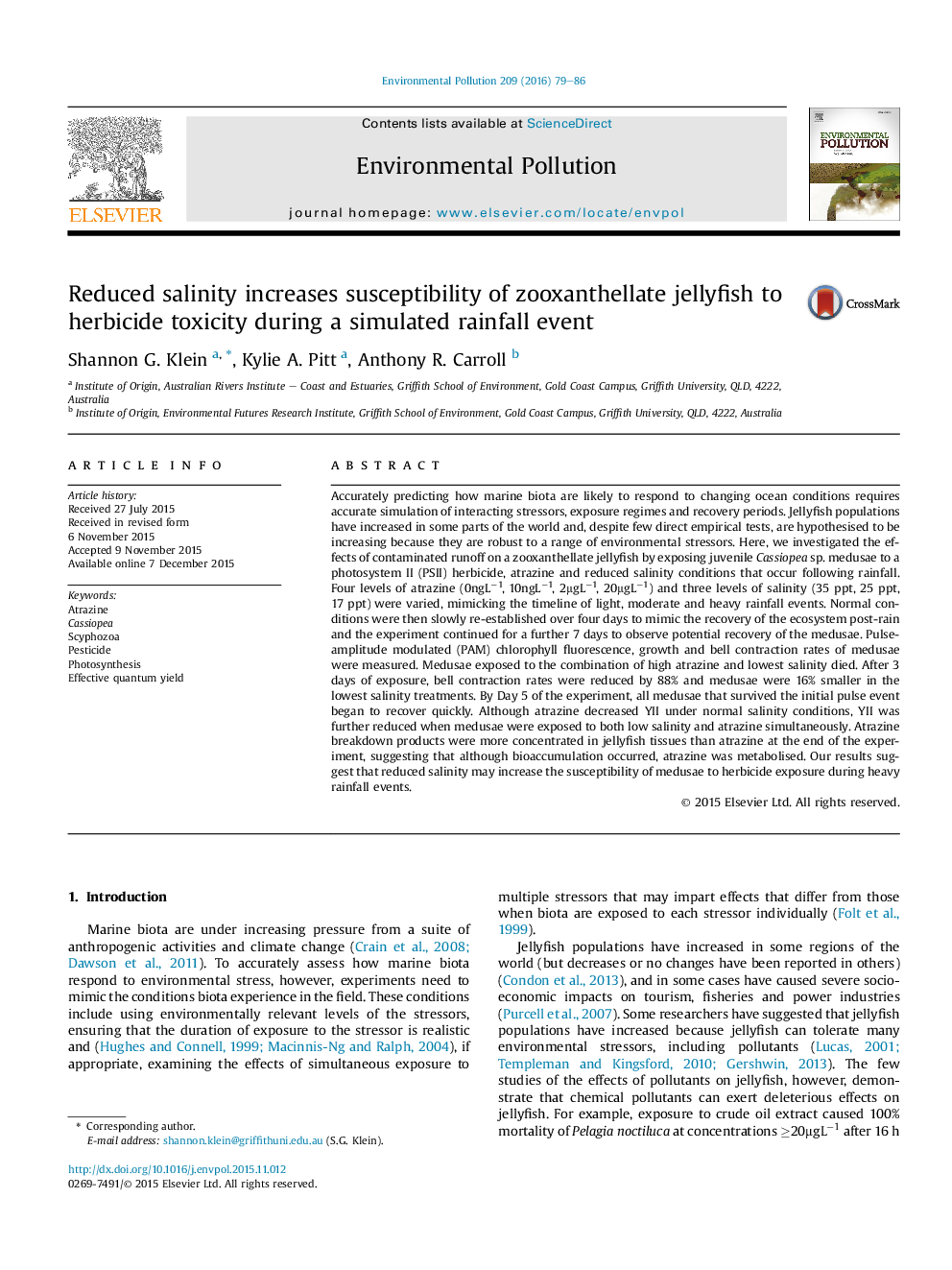| کد مقاله | کد نشریه | سال انتشار | مقاله انگلیسی | نسخه تمام متن |
|---|---|---|---|---|
| 4424266 | 1619164 | 2016 | 8 صفحه PDF | دانلود رایگان |
• Reduced salinity and Atrazine concentrations were varied to mimic rainfall events.
• Photosynthetic efficiency, survival, growth and behaviour were measured.
• Cassiopea sp. jellyfish in the high Atrazine, low salinity treatment died.
• Atrazine breakdown products were more concentrated in jellyfish tissues than Atrazine.
• Reduced salinity may increase the susceptibility of jellyfish to herbicide toxicity.
Accurately predicting how marine biota are likely to respond to changing ocean conditions requires accurate simulation of interacting stressors, exposure regimes and recovery periods. Jellyfish populations have increased in some parts of the world and, despite few direct empirical tests, are hypothesised to be increasing because they are robust to a range of environmental stressors. Here, we investigated the effects of contaminated runoff on a zooxanthellate jellyfish by exposing juvenile Cassiopea sp. medusae to a photosystem II (PSII) herbicide, atrazine and reduced salinity conditions that occur following rainfall. Four levels of atrazine (0ngL−1, 10ngL−1, 2μgL−1, 20μgL−1) and three levels of salinity (35 ppt, 25 ppt, 17 ppt) were varied, mimicking the timeline of light, moderate and heavy rainfall events. Normal conditions were then slowly re-established over four days to mimic the recovery of the ecosystem post-rain and the experiment continued for a further 7 days to observe potential recovery of the medusae. Pulse-amplitude modulated (PAM) chlorophyll fluorescence, growth and bell contraction rates of medusae were measured. Medusae exposed to the combination of high atrazine and lowest salinity died. After 3 days of exposure, bell contraction rates were reduced by 88% and medusae were 16% smaller in the lowest salinity treatments. By Day 5 of the experiment, all medusae that survived the initial pulse event began to recover quickly. Although atrazine decreased YII under normal salinity conditions, YII was further reduced when medusae were exposed to both low salinity and atrazine simultaneously. Atrazine breakdown products were more concentrated in jellyfish tissues than atrazine at the end of the experiment, suggesting that although bioaccumulation occurred, atrazine was metabolised. Our results suggest that reduced salinity may increase the susceptibility of medusae to herbicide exposure during heavy rainfall events.
Journal: Environmental Pollution - Volume 209, February 2016, Pages 79–86
